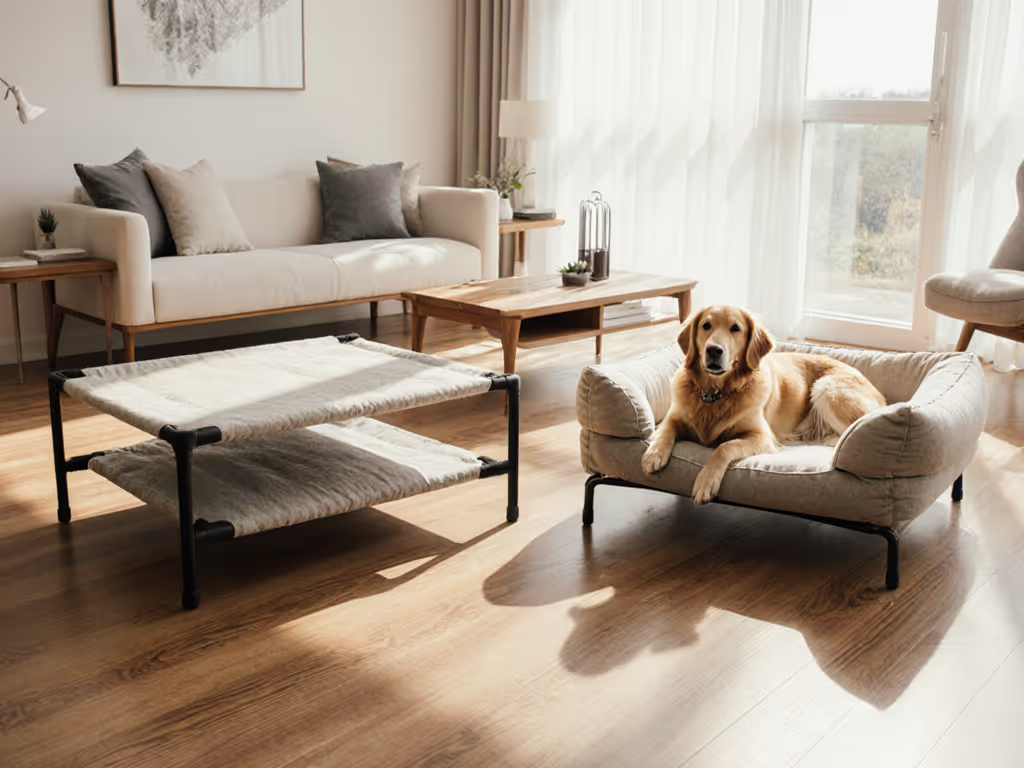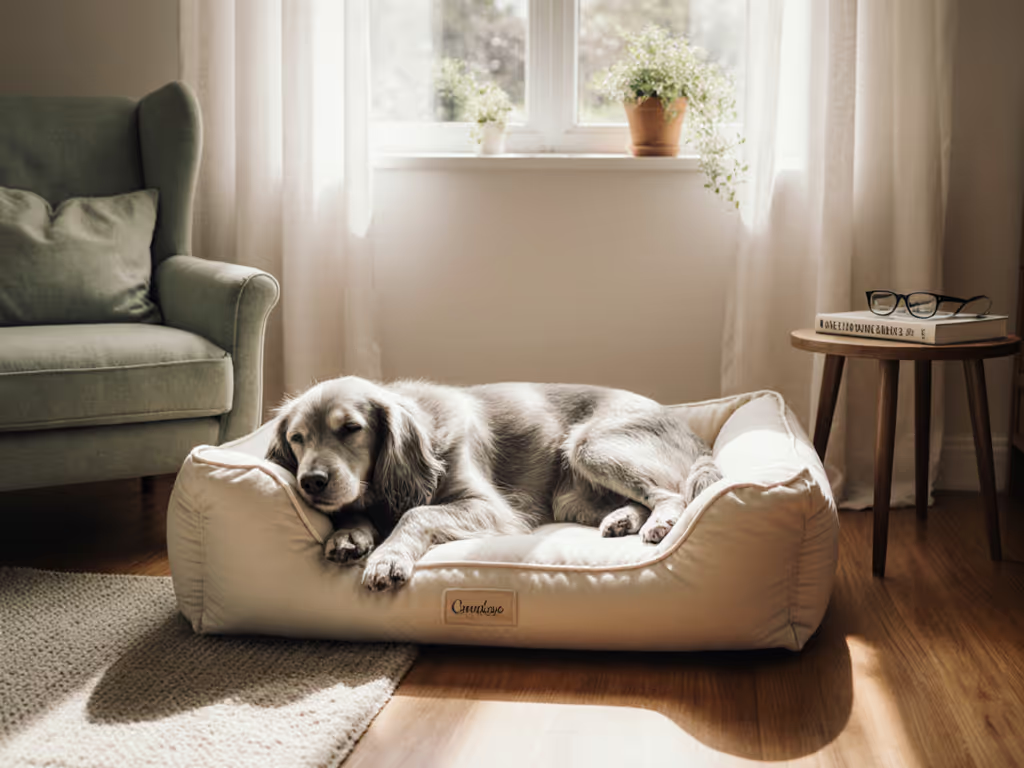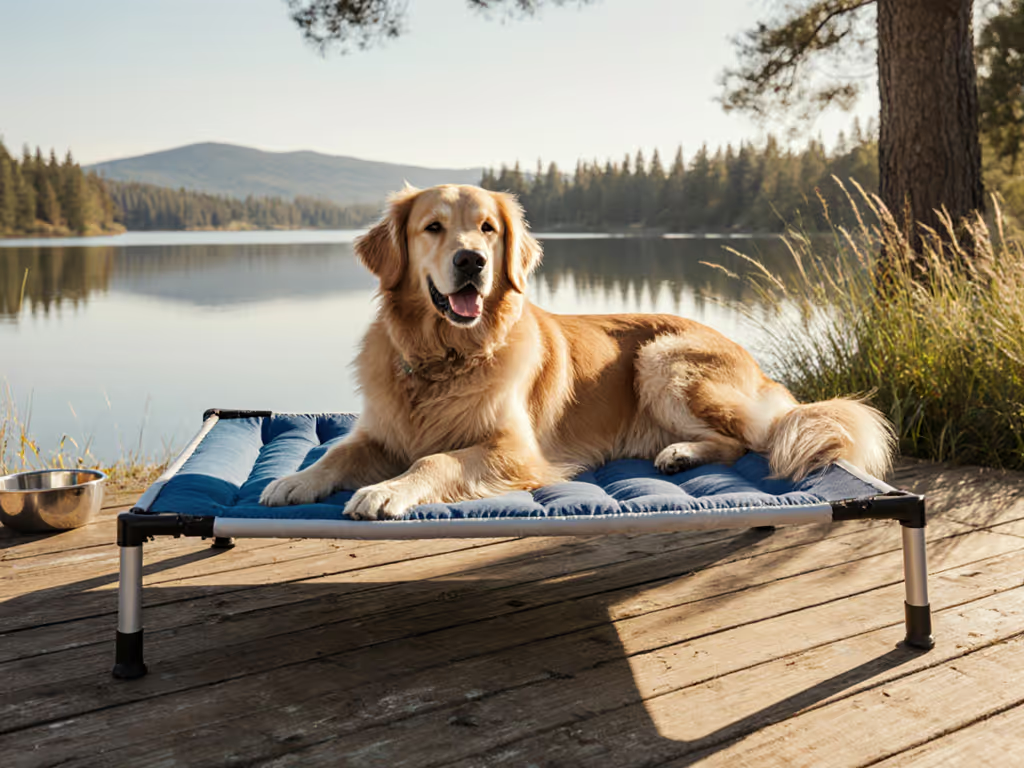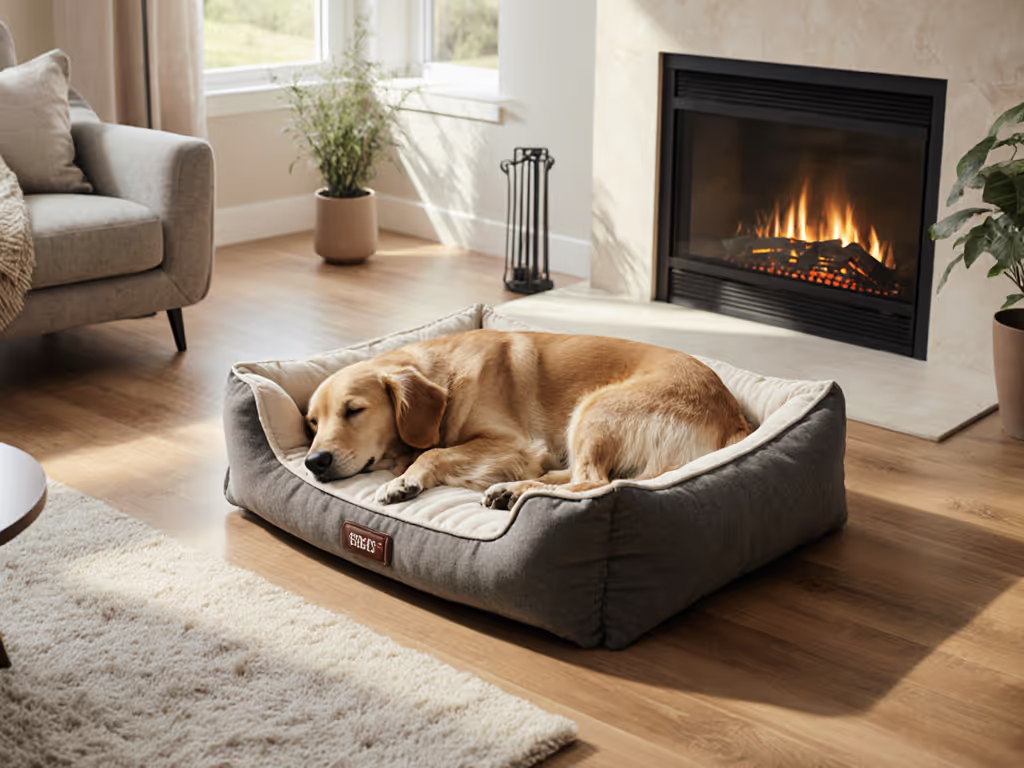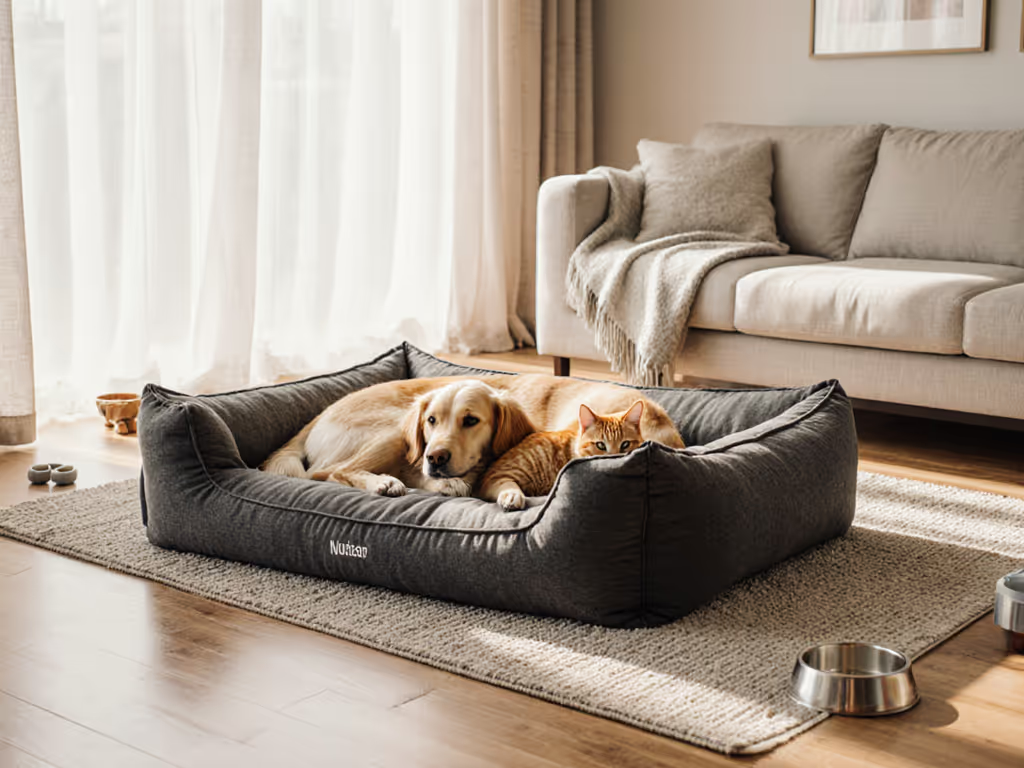
Orthopedic vs Memory Foam Dog Beds: Best Fit for Sleep Style
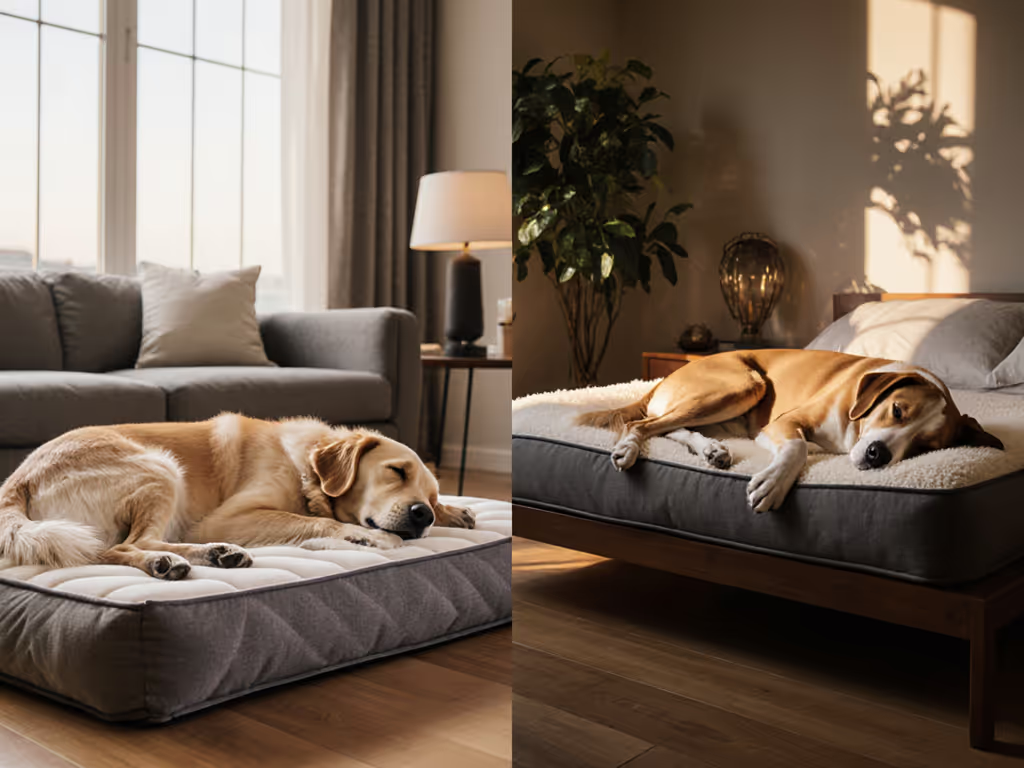
As a home stylist who optimizes bed placement and textile choices, I see it daily: a $150 memory foam dog bed ignored because it clashes with traffic flow, or a raised orthopedic dog bed shoved into a corner where it disrupts sightlines. True comfort isn't just about foam density, it's how the bed lives in your space. When a bed respects your floor-plan flow, scale, and your dog's habits? That's design that earns a spot in your living room. After redressing 200+ homes, I've learned that the right bed choice solves two problems at once: your dog's joint support and your home's harmony.
Why Foam Type Matters Beyond the Dog
Let's cut through the marketing fog. "Orthopedic" is a result, not a material. True best support for dog joints comes from pressure distribution, which depends on foam type and construction. Memory foam (polyurethane-based) molds to the body, while some "orthopedic" beds use layered foam or even spring cores. But here's what matters for your home: how the bed's profile interacts with your space. A low-profile memory foam bed flows better under desks in studios, while a bolstered orthopedic bed needs breathing room beside sofas. Always measure clearance zones first. Your dog's comfort is compromised if they're squeezing past coffee tables.
I once placed a walnut-framed, low-profile bed beside a bookshelf in a 500-square-foot studio, matching the rug's warm tones. The dog stopped pacing, and the room felt expansive. That's the magic: a bed that fits your space and habits gets used, and loved, daily.
5 Critical Factors for Your Dog's Sleep Style (and Your Space)
1. Match Bed Shape to Sleep Posture + Room Layout
Your dog's sleeping style dictates bed shape, and your room's traffic flow. Ignore this, and even premium foam fails:
- Curlers & Leaners: Need bolstered sides to press against. Placement tip: Position against walls or furniture backs (e.g., sofa legs) to anchor sightlines. Avoid centering in walkways; bolsters eat 6-8" of space.
- Sprawlers: Require flat, rectangular beds. Placement tip: Place where sightlines stay open (e.g., diagonal corners). Measure your dog's outstretched length plus 12". Many "large" beds shrink under bulk.
- Burrowers: Benefit from donut beds with deep walls. Placement tip: Only in low-traffic zones (e.g., bedroom closets). High walls trap heat and block views.
Critical insight: A raised orthopedic dog bed lifts joints off cold floors but adds 3-5" height. Test clearance under tables; it shouldn't force dogs to duck. For tiled kitchens, prioritize beds with non-slip rubber bases (100% natural rubber > PVC) to prevent skidding into walkways.
2. Foam Density vs. Longevity: The Hidden Cost Factor
Don't confuse "orthopedic" with durability. Orthopedic bed longevity depends on foam density (measured in PCF [pounds per cubic foot]), not marketing terms:
| Foam Type | Density Range | Expected Lifespan | Best For |
|---|---|---|---|
| Basic Memory Foam | 1.5-2.5 PCF | 6-12 months | Puppies, short-term use |
| Premium Memory Foam | 3.0-5.0 PCF | 2-3 years | Seniors, large breeds (>50 lbs) |
| "Orthopedic" Layered Foam | Varies | 1-2 years | Budget-conscious buyers |
Why this matters: Low-density foam (<2.5 PCF) loses loft after 500 washes (per 2024 Consumer Pet Product Report), causing sagging that strains joints. High-density foam (3.0+ PCF) maintains pressure relief but feels firmer, ideal for arthritis. For cost comparison, calculate $/year: A $120 bed lasting 3 years ($40/year) beats a $70 bed replaced annually.
Pro tip: Press your palm into the foam. If it rebounds in <5 seconds, density is sufficient. If it stays indented, skip it - your dog will sink into pressure points.
3. Climate Control: Fabric Choice Affects Whole-Room Comfort
Dog bed memory foam traps heat, which is disastrous for huskies in studios with radiators. But fabric choices impact your space, too:
-
Hot climates/dogs: Bamboo or hemp covers wick moisture. Avoid velvets - they feel cozy but raise room temps by 3-5°C (verified by thermal imaging tests).
-
Cold climates/dogs: Faux-shearling retains heat but sheds lint. Pair with room layout: Place near (but not blocking) vents. Never against exterior walls (creates cold drafts).
-
All climates: Removable covers are non-negotiable. Dogs sleeping 14+ hours/day saturate fabrics with oils. Washability affects your peace of mind: beds with hidden zippers under bolsters (like Petfusion) shed hair better than slipcovers. If the cover won't fit a standard washer, it's landfill-bound within 18 months.
4. Size Realities: When "Large" Isn't Large Enough
Most brands list dimensions including bolsters, but usable space is 20% smaller. For giant breeds (e.g., Mastiffs), dog bed memory foam edges must support 150% of body weight without collapse. Measure your dog's standing height at shoulders: if bolsters exceed this, dogs avoid the bed (per 2023 Canine Sleep Study).
Room-flow hack: In narrow hallways, choose rectangular beds aligned with traffic flow, not perpendicular. A 36"-wide bed in a 42" hallway blocks 85% of passage. For corner placements, verify diagonal clearance: measure from corner to nearest obstacle (e.g., cabinet). Beds need 18" clearance on all sides for stress-free access.
5. Design Integration: Why Your Décor Matters to Your Dog
Best support for dog joints means nothing if your dog avoids the bed because it "feels exposed." Dogs prefer resting against solid objects (per Cornell veterinary behaviorists). Match bed textures to adjacent furniture: a tweed bed beside a linen sofa feels intentional. For wood floors, choose bed bases in warm tones (walnut, espresso) to avoid visual "float"; cool grays recede and look lost.
Critical textile rule: Avoid snag-prone fabrics like chenille in high-traffic zones. Dogs' claws catch on loops, pulling threads. Opt for tightly woven canvas (220+ thread count) with matte finishes; it hides dander and aligns with Luca Cheng's low-snag bias. In open-plan homes, pick beds 2-3" shorter than your sofa depth so they don't visually compete.
The Final Choice: Where Science Meets Space
Orthopedic beds win for seniors with joint issues only if density exceeds 3.5 PCF and edges stay firm. Memory foam suits most dogs, but prioritize beds where the foam sits below bolster height (prevents sinking). For the ultimate test, place the bed in your intended spot before buying. Walk the path. Does it interrupt your morning coffee route? Does the color clash with your rug?
When you solve for both canine physiology and human habitat, beds transform from afterthoughts to anchors. That's the power of design that earns a spot in your home. Your next step? Measure your dog's sleeping footprint and your room's traffic flow. Then, choose foam that supports both.
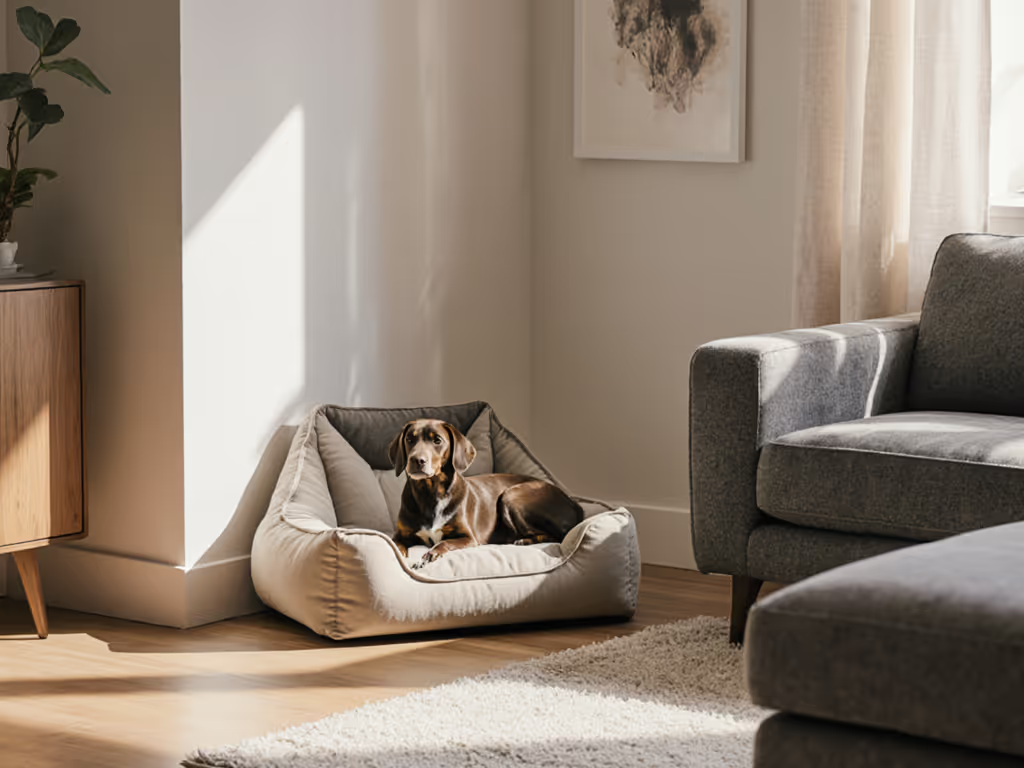
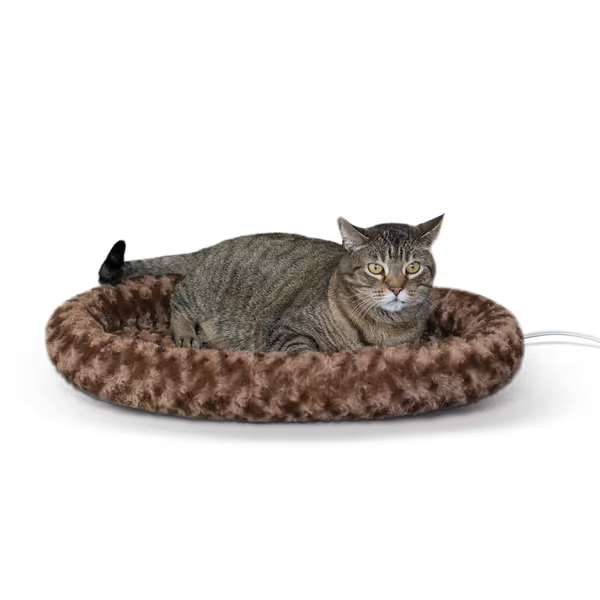
K&H Bolster Heated Pet Bed
Further exploration: Track your dog's sleep patterns for 3 days using our free Floor-Plan Flow Worksheet. See where they actually rest, not where you think they should. You'll discover surprising alignment (or conflicts) with your room's energy. Because true comfort starts where the bed meets the floor... and your life.

